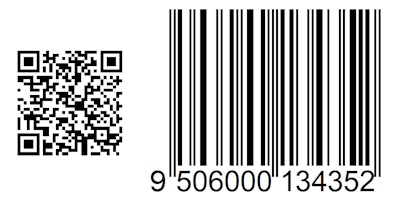
For more than 50 years, the universal product code (UPC) barcode has been the backbone of retail and supply chain operations. It standardized how products are identified, tracked and sold. But the traditional barcode was built for a different era, one focused on speed at checkout and not on end-to-end supply chain intelligence.
That’s why GS1, the global standards body behind the UPC, launched Sunrise 2027. This will phase out one-dimensional barcodes in favor of two-dimensional codes, such as QR and Data Matrix. What’s more, products without them may not even make it to shelves.
This is not a small change. GS1 is already testing 2D codes in 48 countries that together represent 88% of global GDP. It’s nothing short of a global transformation.
From static to dynamic
A UPC only tells you one thing: the product ID. Everything else, including expiration dates, batch data, routing instructions or disposal guidance, lives in separate systems. A 2D code can carry all that or link to it in real time through GS1’s Digital Link standard. Instead of static labels that only work at checkout, products become live access points to data.
That means one printed code can work for everyone: A warehouse worker can scan to check lot numbers, a driver can receive updated routing instructions in real time, a retailer can check the most up-to-date compliance, and a customer can see sustainability details or warranty information with one quick scan.
According to GS1 US, 77% of consumers say product information is important when making a purchase, 62% are willing to pay more for detailed information, and 79% are more likely to buy products with a scannable code that provides details.
Traceability in action
Traceability in the supply chain has always been a challenge. Static barcodes force teams to dig through back-end systems to find lot and batch details, slowing response times and making recalls difficult.
A GS1 US survey found that visibility and traceability are among the top drivers of supply chain confidence. With 2D codes, the information is right on the product. A single scan can pull up batch numbers, expiration dates or regulatory details instantly. When issues arise, recalls can be narrower, faster and less wasteful.
Smarter returns
Returns are one of the costliest parts of retail logistics. In 2024, U.S. retailers saw $890 billion in returns, which amounted to almost 17% of annual sales. Static labels make the returns process harder by locking instructions at the time of purchase. If a customer moves or policies change, the printed return path no longer fits. That creates exceptions, phone calls and wasted effort.
Dynamic QR codes solve this by linking to return instructions that can be updated anytime. Customers scanning a code see the right steps for their situation, whether that means a nearby drop-off site, a printable label or a digital portal.
For supply chain teams, every scan captures data on return reasons, locations and product condition. That reduces exceptions, speeds processing and improves planning across reverse logistics. It also helps identify systemic issues, such as products with high failure rates or packaging that drives unnecessary returns.
Compliance without costly packaging changes
Packaging is another pressure point. Extended Producer Responsibility (EPR) laws in Europe and North America require clear recycling or disposal instructions that differ by market. Traditionally, this has meant printing multiple versions of packaging, which adds cost and slows time to shelf.
That means one 2D can adapt to every market: A French customer can scan the product to see local recycling instructions, a U.S. customer can scan to see disposal guidance or warranty details. Each experience is tailored without needing a different code.
This cuts complexity, keeps packaging costs in check and helps brands stay ahead of regulatory changes.
Routing that adjusts on the fly
Static labels can quickly create problems when shipments change mid-route. If a truck is diverted to another distribution center or an order is split to serve different retailers, teams often need to reprint labels and update multiple systems. That slows down deliveries and increases the risk of mistakes.
Dynamic QR codes remove this bottleneck. The code on the package stays the same, but the data behind it updates in real time. So, if a shipment is redirected or broken down for last-mile delivery, the label automatically reflects the change and drivers won’t miss updates.
The result is fewer relabeling costs, faster turnaround when plans shift and more accurate information for last-mile teams. In a logistics environment where weather, demand swings and disruptions are common, this adaptability makes routing more resilient and delivery timelines more reliable.
Getting real about implementation
The benefits are clear, but making the shift is not as simple as swapping one symbol for another. QR codes need clear space and consistent printing to scan properly. Label design guides will need updates.
The bigger hurdle is the data. To make 2D codes work, product information has to be standardized, centralized and accurate. GS1 research shows that teams across operations, IT, marketing and compliance need to work together to make this happen. That means IT can build the backbone for data accuracy, operations can ensure real-time updates flow from warehouses and logistics, marketing can align content for consumers across regions and compliance can validate that everything meets regulatory requirements.
Retailer readiness is also uneven. Many will still expect both 1D and 2D codes for the next few years. Running dual systems adds short-term complexity but also creates space for learning and testing before 2027.
Consumers are ready
The shift also lines up with consumer behavior. In the U.S., 76% of shoppers want more product information because of high grocery prices. Another 71% are reading labels more closely than before. About 66% say they would scan a QR code on packaging to check freshness, ingredients or shelf life.
In other words, the audience is ready, and supply chains that move early can capture that demand.
What to do now
Supply chain leaders should:
- Start small but smart: Pick one product line where traceability, returns or compliance is a pain point.
- Get the data right: Structure product information so it connects through GS1 Digital Link.
- Pilot in real settings: Test with warehouse staff, retail partners and customer service to iron out issues early.
- Prepare for dual systems: Update printing and workflows to support both UPC and 2D codes.
- Build for growth: Once the foundation is in place, adding features like authentication, warranty registration or sustainability reporting is simple.
The bigger picture
The move to 2D codes is a chance to give products a digital identity that stays with them across the supply chain. That identity makes operations more efficient, reduces waste, improves compliance and creates transparency for customers.
As 2027 approaches, the real question is whether supply chain teams treat this as another box to check or as an opportunity to build the smarter and more agile operations the industry has been waiting for.





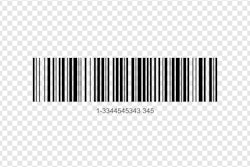


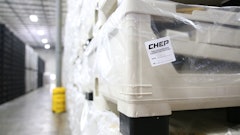
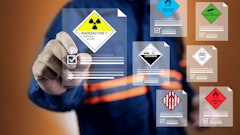


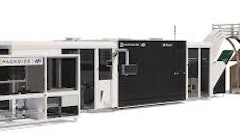
![Pros To Know 2026 [color]](https://img.sdcexec.com/mindful/acbm/workspaces/default/uploads/2025/08/prostoknow-2026-color.mduFvhpgMk.png?ar=16%3A9&auto=format%2Ccompress&bg=fff&fill-color=fff&fit=fill&h=135&q=70&w=240)




